(2024-03-29). Over 1,000 students protest against the Gaza genocide and new anti-democratic policy at University of Michigan. wsws.org The protest was a significant expression of the intense ongoing opposition, in particular among young people, to the US-backed Israeli genocide of the Palestinians, which is now approaching its seventh month.
(2024-03-29). Over 1,000 students protest against the Gaza genocide and new anti-democratic policy at University of Michigan. wsws.org The protest was a significant expression of the intense and ongoing opposition, in particular among young people, to the US-backed Israeli genocide of the Palestinians, which is now approaching its seventh month.
(2024-03-29). Spain Denounces "Indiscriminate Massacres" in Gaza, Imports and Exports Israeli Weapons to Ukraine. globalresearch.ca
(2024-03-29). Ehiopia and BRICS: Regional and Global Dimensions. infobrics.org With the BRICS forum, Ethiopia got a new platform for cooperating with member states on specialised issues like finance, technology and global governance matters, which also positively enhances trust among the members states; Ethiopia is due to benefit substantially over time, writes Dareskedar Taye, Lead Researcher at the Institute of Foreign Affairs, Ethiopia…
(2024-03-29). Ukraine Attacks Russia's Belgorod Region Using Fake 'Russian Dissidents'. globalresearch.ca
(2024-03-29). Who Was Behind the Downing of Malaysian Airlines MH17? globalresearch.ca The MH17 Inquiry has been conducted in an insidious fashion. Important pieces of evidence including eye witness reports, audio & video material transmitted through Ukraine Intelligence (SBU) have been manipulated or excluded from the Dutch inquiry, which largely endorses Washington's accusations directed against Moscow.
(2024-03-29). US-Ukraine Relations with Islamic Terrorists and the Crocus Attack. globalresearch.ca
(2024-03-29). Does Wireless Tech Cause Cancer or Is It Just Another "Coincidence" Being Propagated by Tin-foil Hat Conspiracy Theorists? globalresearch.ca
(2024-03-29). Comer alimentos ultraprocessados pode aumentar o risco de ataque cardíaco e derrame em até 21%. globalresearch.ca Em uma revisà£o da literatura sobre os efeitos dos alimentos ultraprocessados na saúde do coraàßà£o, pesquisadores do Hospital Tangdu da China, da Universidade Médica da Foràßa Aérea, na província de Shaanxi, encontraram uma associaàßà£o positiva e previsível entre o
(2024-03-29). A "Black Swan Event" — General Michael Flynn Raises Questions About Baltimore Bridge Collapse. Chaos in Supply Chains and Trans-Atlantic Trade. globalresearch.ca
(2024-03-29). Russian Forces Target Intelligence Facilities in Kiev. globalresearch.ca
(2024-03-29). The Baltimore Bridge Collapse Is Going to Have an Enormous Impact on U.S. Supply Chains. globalresearch.ca
(2024-03-29). China launches meteorological research satellite into orbit. tvbrics.com  The satellite will help predict natural disasters…
The satellite will help predict natural disasters…
(2024-03-29). Labor Holds the Line in Argentina. counterpunch.org 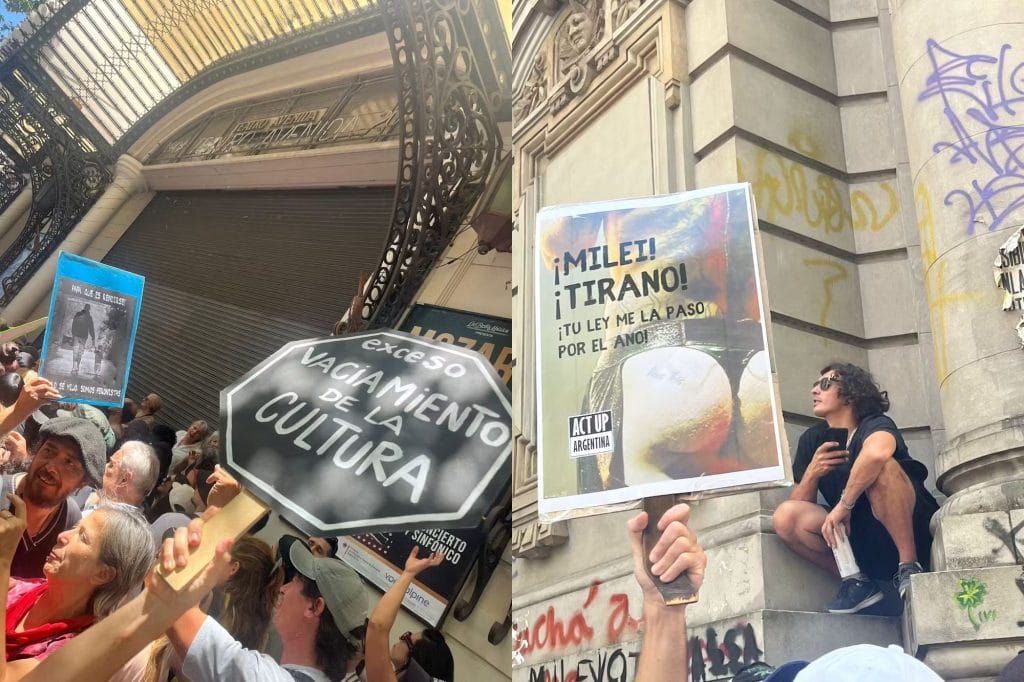 This March, Argentina's school year began with empty classrooms. The price of learning materials rose by 502 percent over the past year, leaving many children unprepared for the year to come. And the teachers? On strike after President Javier Milei announced deep cuts to their salaries. There's something much larger happening here: Workers rights are
This March, Argentina's school year began with empty classrooms. The price of learning materials rose by 502 percent over the past year, leaving many children unprepared for the year to come. And the teachers? On strike after President Javier Milei announced deep cuts to their salaries. There's something much larger happening here: Workers rights are
(2024-03-29). NATO's Criminal War against the Federal Republic of Yugoslavia. Not to Forget! 1999-2024. The Belgrade Declaration. globalresearch.ca
(2024-03-29). A Ucrânia ataca a regià£o russa de Belgorod usando falsos 'dissidentes russos'. globalresearch.ca Os ataques ucranianos a Belgorod continuam a acontecer. O regime de Kiev intensifica cada vez mais a sua violência contra pessoas comuns nas fronteiras russas, atingindo alvos civis e matando cidadà£os pacíficos. Nos meios de comunicaàßà£o ocidentais, a responsabilidade pelos …
(2024-03-28). Six Chinese sites named UNESCO Global Geoparks. ecns.cn The Mount Changbaishan Geopark, along with five other Chinese geoparks, were named Global Geoparks by the United Nations Educational, Scientific and Cultural Organization (UNESCO) on Wednesday."ÄÄ…
(2024-03-29). Conjoined twin Abby and Brittany Hensel is married. albawaba.com  Abby and Brittany Hensel, the conjoined twins who first gained national attention when they appeared on The Oprah Winfrey Show in 1996, have reached a major life milestone: Abby is married.The Hensel twins later starred in the feel-good TLC reality series "Abby and Brittany," which showcased their daily lives. From driving to traveling across Europe, the show provided a glimpse into their unique experiences. When the series ended after one season, Abby and Brittany had just graduated from college with degrees in education.Abby, now 34 years old, is married to Josh Bowling, a nurse and United States Army veteran.
Abby and Brittany Hensel, the conjoined twins who first gained national attention when they appeared on The Oprah Winfrey Show in 1996, have reached a major life milestone: Abby is married.The Hensel twins later starred in the feel-good TLC reality series "Abby and Brittany," which showcased their daily lives. From driving to traveling across Europe, the show provided a glimpse into their unique experiences. When the series ended after one season, Abby and Brittany had just graduated from college with degrees in education.Abby, now 34 years old, is married to Josh Bowling, a nurse and United States Army veteran.
(2024-03-29). Why Is NATO and The Kiev Regime Terrified of Russia's 'Zircon' Hypersonic Missile? globalresearch.ca
(2024-03-29). Germany's children to be schooled for war once again. wsws.org Education Minister Bettina Stark-Watzinger plans to introduce lessons in war for pupils. To this end, "young officers" would visit schools.
(2024-03-29). The Best Paying Jobs in Business Services. albawaba.com  Are you looking for a career shift? Considering a job in business services can be a wise step to do! Business services jobs offer around $100 thousands per year. | Work that is done between businesses is referred to as business services. These are any services rendered by one organization to another when the latter is unable to provide the necessary skills. | In this article, we will share with you the best paying jobs in business services. These jobs cater in many fields such as: technology, management, science, art, and law. | The Best Paying Jobs in Business Services: Full List: | 1. Computer and Infor…
Are you looking for a career shift? Considering a job in business services can be a wise step to do! Business services jobs offer around $100 thousands per year. | Work that is done between businesses is referred to as business services. These are any services rendered by one organization to another when the latter is unable to provide the necessary skills. | In this article, we will share with you the best paying jobs in business services. These jobs cater in many fields such as: technology, management, science, art, and law. | The Best Paying Jobs in Business Services: Full List: | 1. Computer and Infor…
(2024-03-29). Patrick Lawrence: Imperium: Decline on the Way to Fall. scheerpost.com  President Joe Biden delivers remarks announcing CHIPS and Science Act grants to Intel to expand U.S. semiconductor production, Wednesday, March 20, 2024, at the Intel Ocotillo Campus in Chandler, Arizona. (Official White House Photo by Adam Schultz) By Patrick Lawrence / Original to ScheerPost I just read a most remarkable piece in The Seattle Times—remarkable …
President Joe Biden delivers remarks announcing CHIPS and Science Act grants to Intel to expand U.S. semiconductor production, Wednesday, March 20, 2024, at the Intel Ocotillo Campus in Chandler, Arizona. (Official White House Photo by Adam Schultz) By Patrick Lawrence / Original to ScheerPost I just read a most remarkable piece in The Seattle Times—remarkable …
(2024-03-29). A massive march for memory, truth and justice, on the first 24 March of a denialist government. pressenza.com 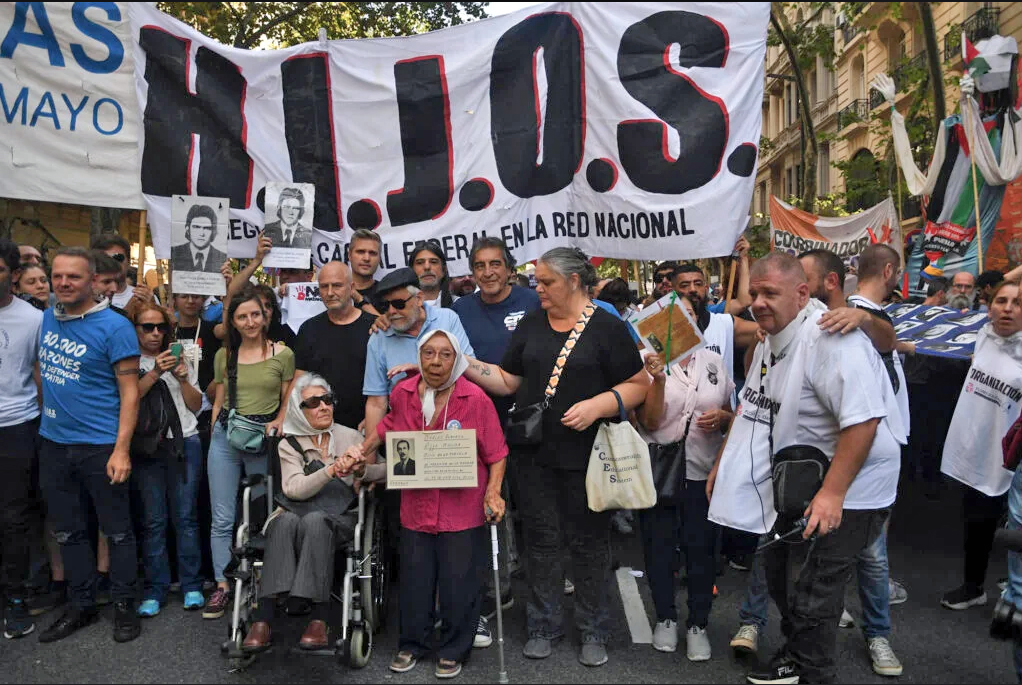 A crowd gathered in the Plaza de Mayo this Sunday to commemorate the National Day of Remembrance for Truth and Justice, on the 48th anniversary of the coup d'état, on an unprecedented 24 March with a national government that, for the first time in democracy, takes a denialist stance and rejects the figure of 30,000 disappeared. | Source: somostelam.com.ar | With its epicenter in the Plaza de Mayo — but with replicas in different parts of the country — the march was called by human rights organizations, together with political, social, student, and trade union groups, in a call to demand and protest agai…
A crowd gathered in the Plaza de Mayo this Sunday to commemorate the National Day of Remembrance for Truth and Justice, on the 48th anniversary of the coup d'état, on an unprecedented 24 March with a national government that, for the first time in democracy, takes a denialist stance and rejects the figure of 30,000 disappeared. | Source: somostelam.com.ar | With its epicenter in the Plaza de Mayo — but with replicas in different parts of the country — the march was called by human rights organizations, together with political, social, student, and trade union groups, in a call to demand and protest agai…
(2024-03-29). New hope grows as more Americans oppose Israel's war in Gaza. newarab.com  The majority of Americans oppose Israel's actions in Gaza, according to a The poll, conducted by Gallup, shows a 10 per cent increase in American public disapproval of Israel's military actions, compared with one released in November. | The research, conducted between 1 and 20 March, shows a marked shift in public opinion. Seeing an even bigger shift is Americans' approval of Israel's conduct in…
The majority of Americans oppose Israel's actions in Gaza, according to a The poll, conducted by Gallup, shows a 10 per cent increase in American public disapproval of Israel's military actions, compared with one released in November. | The research, conducted between 1 and 20 March, shows a marked shift in public opinion. Seeing an even bigger shift is Americans' approval of Israel's conduct in…
(2024-03-29). UNRWA suspends teacher in Lebanon. newarab.com  Dozens of people protested outside the Beirut office of the United Nations Palestinian Refugee Agency School teacher Fathi al-Sharif was put on leave for three months without pay as the UN agency investigated alleged activities "that are in violation of the Agency's regulatory framework governing staff conduct," the agency told Reuters in a statement. | UNRWA said it could…
Dozens of people protested outside the Beirut office of the United Nations Palestinian Refugee Agency School teacher Fathi al-Sharif was put on leave for three months without pay as the UN agency investigated alleged activities "that are in violation of the Agency's regulatory framework governing staff conduct," the agency told Reuters in a statement. | UNRWA said it could…
(2024-03-29). Morocco's Moudawana reform puts women's rights in ballot box. newarab.com 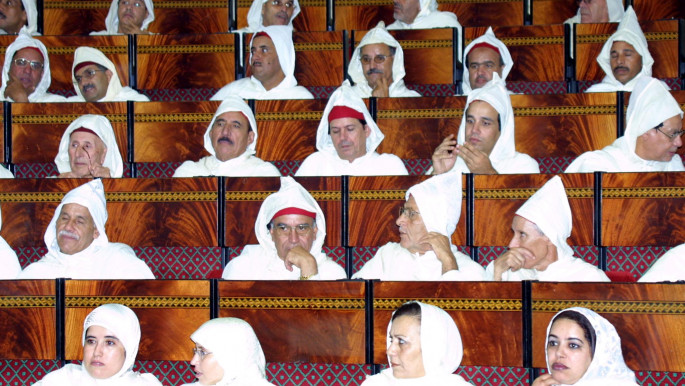 For many Moroccans, SaàØd Saadi embodies the struggle for women's rights. Now a researcher in political economy and a retired professor, Saadi looks back on his upbringing as the spark for his career, one filled with fighting social injustice and misogyny. He recalls his earliest years when he was surrounded by his politically active family, including his sisters. | Saadi soon became involved in the Progress and Socialism Party (PPS) and years later, joined Abdrerrahman Youssoufi's leftist government as Secretary of State for Social Protection, Family and Childhood in 1998. | In office, Saadi pushed for…
For many Moroccans, SaàØd Saadi embodies the struggle for women's rights. Now a researcher in political economy and a retired professor, Saadi looks back on his upbringing as the spark for his career, one filled with fighting social injustice and misogyny. He recalls his earliest years when he was surrounded by his politically active family, including his sisters. | Saadi soon became involved in the Progress and Socialism Party (PPS) and years later, joined Abdrerrahman Youssoufi's leftist government as Secretary of State for Social Protection, Family and Childhood in 1998. | In office, Saadi pushed for…
(2024-03-29). Afghan girls refrained from schools for third year running. newarab.com 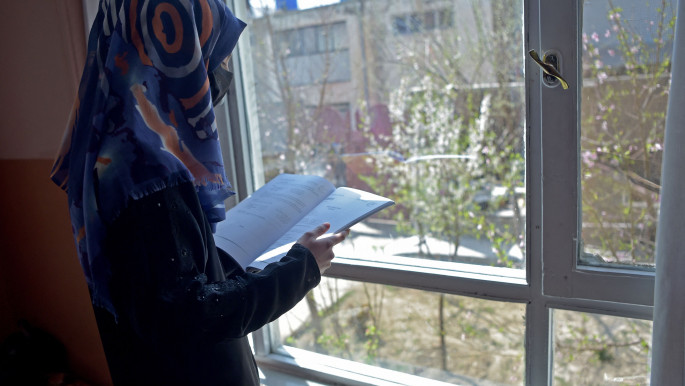 Sequestered at home in a remote Afghan town, 18-year-old Shekiba often roams the house hunting for the patchy internet signal that is her last link to education. | Shekiba has turned to online learning since the Taliban returned to power in 2021 and shut her out of classrooms, signing up for live economics lectures she squints at on a pocket-sized phone screen. | Boys and men returned to classes with the start of the Afghan new year, but girls and women will be left behind again by a Taliban government education blockade that is part of a raft of restrictions the United Nations has labelled 'gender apartheid'
Sequestered at home in a remote Afghan town, 18-year-old Shekiba often roams the house hunting for the patchy internet signal that is her last link to education. | Shekiba has turned to online learning since the Taliban returned to power in 2021 and shut her out of classrooms, signing up for live economics lectures she squints at on a pocket-sized phone screen. | Boys and men returned to classes with the start of the Afghan new year, but girls and women will be left behind again by a Taliban government education blockade that is part of a raft of restrictions the United Nations has labelled 'gender apartheid'
 By The attack left Russia and the world in shock. Despite the ongoing NATO-orchestrated conflict in Ukraine, the country has been largely safe from such …
By The attack left Russia and the world in shock. Despite the ongoing NATO-orchestrated conflict in Ukraine, the country has been largely safe from such … Hollywood power couple Will Smith and Jada Pinkett Smith are shutting down their philanthropic organization, the Will and Jada Smith Family Foundation, after a sharp decline in donations that followed the notorious 2022 Oscars slapping incident. | Since its inception in 1996, the foundation has made significant strides in health, arts education, and environmental sustainability, earning accolades and support from high-profile benefactors, thereby cementing its status in the realm of celebrity-led charitable efforts. | Celebrity-led charities like Newman's Own and Olivia Rodrigo's Fund 4 Good have become essent…
Hollywood power couple Will Smith and Jada Pinkett Smith are shutting down their philanthropic organization, the Will and Jada Smith Family Foundation, after a sharp decline in donations that followed the notorious 2022 Oscars slapping incident. | Since its inception in 1996, the foundation has made significant strides in health, arts education, and environmental sustainability, earning accolades and support from high-profile benefactors, thereby cementing its status in the realm of celebrity-led charitable efforts. | Celebrity-led charities like Newman's Own and Olivia Rodrigo's Fund 4 Good have become essent…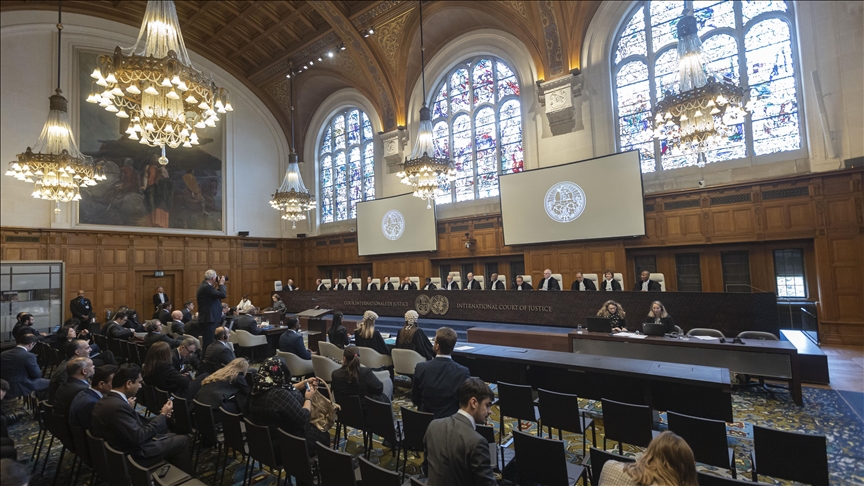 The world court will rule on the requested additional measures in the coming days, which may include criticism of Israel as well as requests for additional monitoring reports, according to the KAN broadcaster report.
The world court will rule on the requested additional measures in the coming days, which may include criticism of Israel as well as requests for additional monitoring reports, according to the KAN broadcaster report.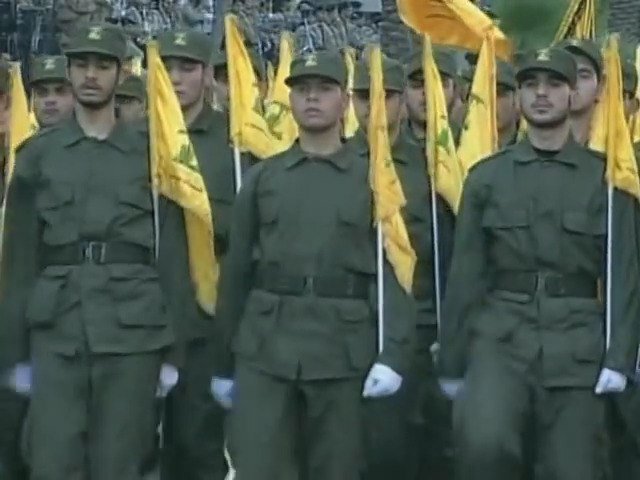 Lebanon's Hezbollah resistance movement has conducted multiple operations against Israeli military outposts in the northern part of the 1948 occupied territories, expressing its unwavering support for Palestinians in Gaza amid a genocidal war.
Lebanon's Hezbollah resistance movement has conducted multiple operations against Israeli military outposts in the northern part of the 1948 occupied territories, expressing its unwavering support for Palestinians in Gaza amid a genocidal war. A spokesman for the UN children's agency said on Tuesday that the situation in the war-torn Gaza is so bad that teens are increasingly expressing their desire to be quickly murdered in order to end the "nightmare".
A spokesman for the UN children's agency said on Tuesday that the situation in the war-torn Gaza is so bad that teens are increasingly expressing their desire to be quickly murdered in order to end the "nightmare".  By Jack Poulson — Mar 20, 2024 | Fort Huachuca's Human Intelligence Training Center plans to teach soldiers to evade adversary counterintelligence, including through remotely manipulating cellphone sensors and wiping hidden volumes. | Within Fort Huachuca in southeastern Arizona, the U.S. Defense Department is quietly training its soldiers on how to spy against 'near-peer' adversaries such as China in the age of cellphones and facial recognition. While the Central Intelligence Agency receives the bulk of popular attention and critique for collecting what is referred to as 'human intelligence', or 'HUMINT', t…
By Jack Poulson — Mar 20, 2024 | Fort Huachuca's Human Intelligence Training Center plans to teach soldiers to evade adversary counterintelligence, including through remotely manipulating cellphone sensors and wiping hidden volumes. | Within Fort Huachuca in southeastern Arizona, the U.S. Defense Department is quietly training its soldiers on how to spy against 'near-peer' adversaries such as China in the age of cellphones and facial recognition. While the Central Intelligence Agency receives the bulk of popular attention and critique for collecting what is referred to as 'human intelligence', or 'HUMINT', t… When exposing a crime is treated as committing a crime, you are being ruled by criminals. In the current governmental climate, obeying one's conscience and speaking truth to the power of the police state can easily render you an "enemy of the state." The government's list of so-called "enemies of the state" is growing by …
When exposing a crime is treated as committing a crime, you are being ruled by criminals. In the current governmental climate, obeying one's conscience and speaking truth to the power of the police state can easily render you an "enemy of the state." The government's list of so-called "enemies of the state" is growing by … Statement before the United Nations Security Council, Arria Formula Meeting, 25 March 2024. Excellencies, distinguished delegates, The unlawfulness of unilateral coercive measures imposed by certain countries against other States, businesses and individuals has been documented in United Nations studies going back to the seminal report issued in the year 2000 by the Subcommission on the
Statement before the United Nations Security Council, Arria Formula Meeting, 25 March 2024. Excellencies, distinguished delegates, The unlawfulness of unilateral coercive measures imposed by certain countries against other States, businesses and individuals has been documented in United Nations studies going back to the seminal report issued in the year 2000 by the Subcommission on the  The abortion debate continues to rage and women still need to fight for the right to decide whether or not we can or should abort. Pew Research Center has conducted no shortage of surveys about abortion over the years, providing a window into Americans' views on the subject. In a Center survey conducted nearly a
The abortion debate continues to rage and women still need to fight for the right to decide whether or not we can or should abort. Pew Research Center has conducted no shortage of surveys about abortion over the years, providing a window into Americans' views on the subject. In a Center survey conducted nearly a 
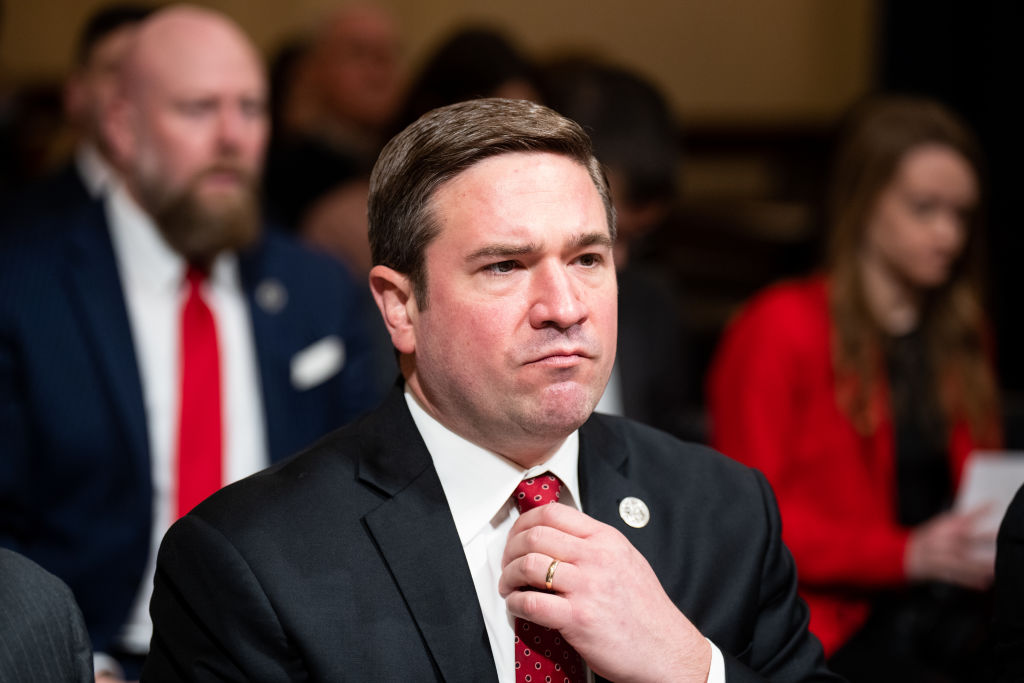 Missouri Attorney General Andrew Bailey is being accused of "racial bias" due to his response to a fight video between a Black and white student.
Missouri Attorney General Andrew Bailey is being accused of "racial bias" due to his response to a fight video between a Black and white student.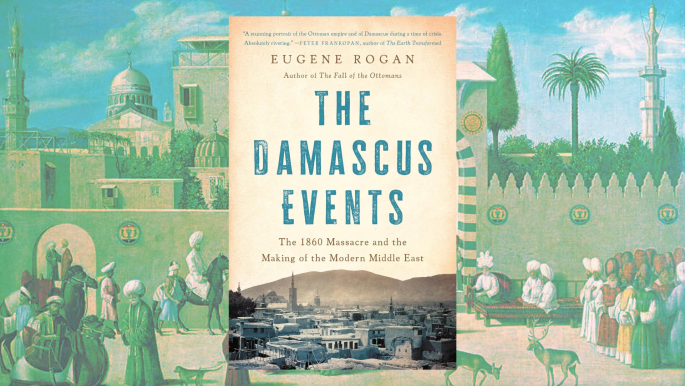 "Let us finish the Christians, let us exterminate them," shrieked the mob outside the Damascus Citadel. | Soon after, the Citadel — which housed thousands of The 1860 outbreak of anti-Christian violence was a shocking and shameful episode in Damascus's history. Centuries of co-existence, tol…
"Let us finish the Christians, let us exterminate them," shrieked the mob outside the Damascus Citadel. | Soon after, the Citadel — which housed thousands of The 1860 outbreak of anti-Christian violence was a shocking and shameful episode in Damascus's history. Centuries of co-existence, tol…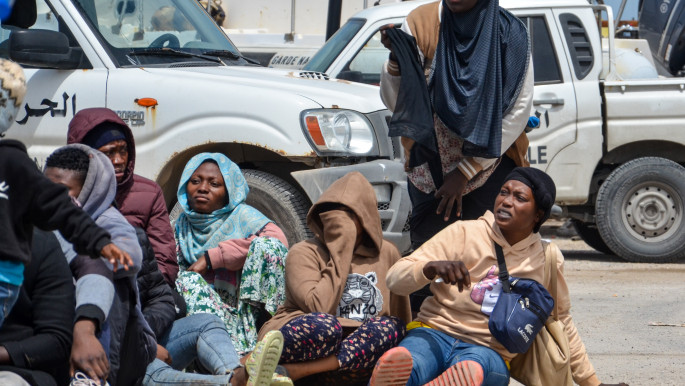
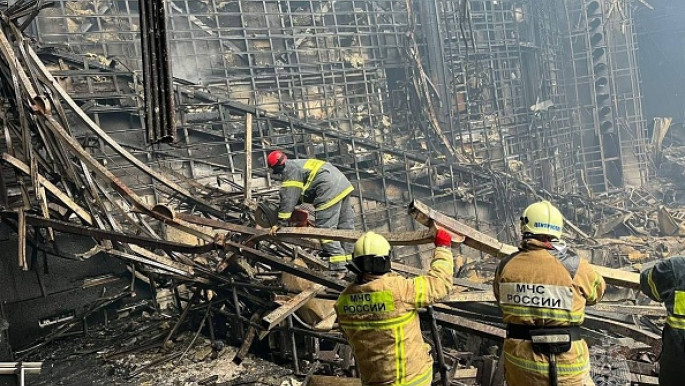 Russian schoolboys Islam Khalilov, 15, and Artyom Donskoy, 14, have been praised for saving scores of people from the When the attack began, the students were working as cloakroom attendants. Along with other employees, they directed people towards the exits and away from dead ends. | Khalilov filmed himself running towards the scene of the attack and directing people towards the exits, while Donskoy was seen escorting another group out of the burning building. | Islam recall…
Russian schoolboys Islam Khalilov, 15, and Artyom Donskoy, 14, have been praised for saving scores of people from the When the attack began, the students were working as cloakroom attendants. Along with other employees, they directed people towards the exits and away from dead ends. | Khalilov filmed himself running towards the scene of the attack and directing people towards the exits, while Donskoy was seen escorting another group out of the burning building. | Islam recall…